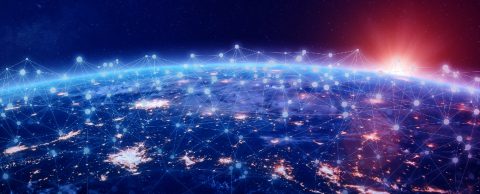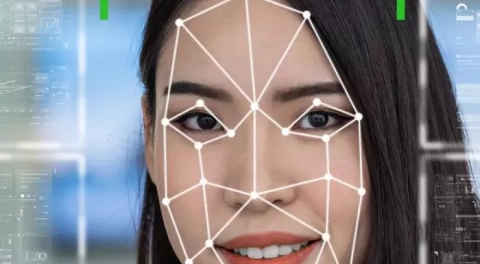Until recently, it was widely accepted that most efficient way of securing data is by using biometrics, such as fingerprints, iris, and facial recognition to identify and authenticate access. But with advancements and ease of access to latest technologies, the world is discovering that systems built solely on biometrics are not foolproof.
This reality was vividly illustrated recently when a security researcher in Germany purchased on eBay a device for to capture fingerprints and perform iris scans – only to find out that the $68 kit device’s memory card held the names, nationalities, photographs, fingerprints, and iris scans of 2,632 people. In addition, a cybersecurity company recently reported that sharing high-resolution media online can unintentionally expose sensitive biometric data.
But, tools are available to help organizations fight bad actors. New age security systems are evolving to not only use biometrics data but also leverage computer vision (AI) resulting in a powerful combination that can help enhance security and prevent unauthorized access.
However, building this combination is not easy and comes with its own challenges. One of the biggest challenges is dealing with data diversity. For computer vision AI models to be effective and free of bias, a wide range of visual data needs to be processed by these systems including variations in data like different lighting conditions, camera angles, individual differences etc. While human analysts may miss potential threats due to cognitive biases or a lack of knowledge about a particular system, Computer vision AI, on the other hand, can analyze visual data objectively, without being affected by these biases. This can help to improve the accuracy of threat detection and reduce the risk of false positives.
Yet, all this diverse data would not produce a strong system without it being tested and exploited for all possible vulnerabilities. The system also needs to be equipped with myriad of spoofing detection methods that evaluate and consider various techniques to detect and prevent attempts to mimic or forge biometric data.
One of those approaches – ethical hacking — involves an authorized attempt to gain unauthorized access to a computer system, application, or data. Carrying out an ethical hack involves duplicating strategies and actions of malicious attackers. With prior approval from the organization or owner of the IT asset, the mission of ethical hacking is opposite from malicious hacking.
Ethical Hacking
Ethical hacking must be managed carefully, following carefully agreed upon protocols such as:
- Honoring the law and the needs of the organization. It goes without saying, the hack must be performed legally and with full knowledge of the organization. The operation must be done with proper approval before a security assessment is performed.
- Agreeing on the scope. Parties involved need to agree upon the scope of the assessment so that the ethical hacker’s work remains legal and within the organization’s approved boundaries.
- Reporting vulnerabilities. The ethical hacker must notify the organization of all vulnerabilities discovered during the assessment, and remediation advice for resolving these vulnerabilities must be given.
- Respecting data sensitivity. Depending on the data sensitivity, ethical hackers may have to agree to a non-disclosure agreement, in addition to other terms and conditions required by the assessed organization.
When AI models are also trained with multiple spoofing techniques (as discussed by my colleague Sergio Bruccoleri here) the systems will also be able to detect and prevent a wide range of attacks and breaches, from simple spoofing attempts to more advanced and sophisticated attacks.
When all these components are combined, the security system becomes much more robust. The biometrics data ensures that only authorized personnel can access the system, computer vision AI ensures that any suspicious activity is flagged, and ethical hacking ensures that any vulnerabilities in the system are identified and fixed.
Security systems built in such way can help to prevent unauthorized access, improve the accuracy of threat detection, and keep our personal and professional data safe. With the increasing use of technology in everyday life, it’s crucial that we continue to develop and improve these systems to ensure the security and integrity of our digital landscape.
How Centific Can Help You
At Centific, we help businesses safeguard themselves through our
AI with a diverse team of humans in the loop to ensure that the technology is inclusive, human centric, and future-proof.
As we work with our clients to design biometrics applications, we rely on our own globally diverse crowdsourced team to train our models. Our crowdsourced team comes from all walks of life and global cultures. This ensures that we:
- Are inclusive in our approach, thus ensuring that what we design safeguards for people from all backgrounds and countries.
- Are creative and imaginative because we draw from a larger pool of people who can collaborate to test all the ways someone might spoof the technology. For example, someone with a gaming background will contribute ideas and scenarios that are different from someone with a banking background.
But we also need a common platform to manage and scale the work we do. This is where our OneForma platform comes into play. We rely on OneForma platform to:
- Manage workflow – such as the myriad data inputs that are required to train biometrics applications.
- Literally test the system. In our labs in Spain, the United States, India, and Singapore, our team role plays the many ways that someone might spoof biometrics systems such as facial recognition – in effect, a stress test. OneForma records the outcome using AI to strengthen the application. OneForma also uses synthetic data to teach AI beyond what people can do as noted above.
Bottom line: AI and a diverse set of creative thinkers and the right technology are crucial for ensuring that biometrics technology protects businesses while providing an intelligent, human-centric experience. Contact us to learn more.










